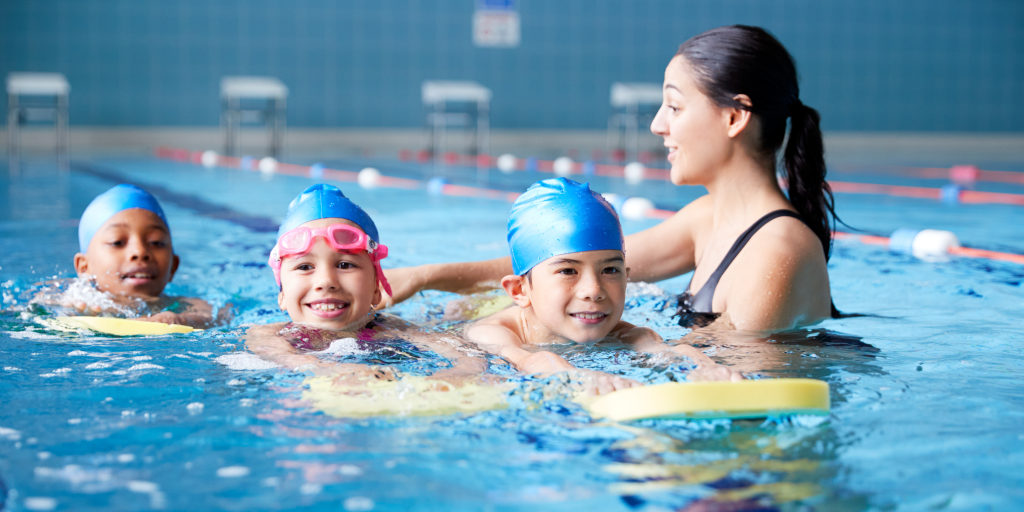
Swimming provides a variety of benefits — in addition to providing a full-body workout, the activity builds muscle strength and benefits cardiovascular fitness all the while serving as a recreational and social activity. While swimming can prove to be the ultimate way for kids to cool off and stay active during the summer, getting them in the water during the winter months can provide several benefits as well. From the value of routine swimming as a way to maintain skill and confidence in the water to serving as a productive mental health outlet, encouraging your kids to swim throughout the winter months brings to light more than a couple of benefits.

Maintaining confidence in the water
For many children, learning and mastering swimming skills is a major goal during summer swim sessions. Stopping altogether during the winter months, however, can prove to be a disadvantage to your child’s progress. One survey on behalf of Royal Life Saving of parents of children who attended swimming lessons between 2019 and 2021 discovered that parents thought that pool closures “had a negative impact on their children’s swimming skills.” Furthermore, the survey revealed that 55% reported a decline in their child’s swimming skills overall, while 42% noted a decline in the distance that their children could swim (continually). With that in mind, children who have a goal of learning how to swim or developing their swimming skills can benefit from regularly getting in the water throughout the off-season.
Going for a routine swim can not only keep children in practice, but can boost their confidence as well. According to a Swimming World Magazine article, low self-confidence is one of the most frequent mental blocks among swimmers. Working on (and mastering) the details of swim techniques and maintaining a positive attitude are both listed as just two things that can be done to build self-confidence in the pool, each of which can be worked on with consistent practice.

A beneficial outlet for mental health
In addition to its physical health benefits, swimming can provide a much-needed outlet for children, too. One 2023 Beyond Blue survey released exclusively to the ABC highlights the fact that poor mental health and excessive screen time are “the biggest problems” facing young people. The research, which surveyed 2,000 Australian teachers, also found that only one in three believed that students at their school were mentally healthy. Getting out and into a social, productive activity, however — like swimming — can have a positive impact on mental health. Better Health Channel dives further into the benefits associated with physical activity for children, including several that boost mental health. For instance, physical activity presents advantages such as increased self-esteem and confidence, improved concentration, and better sleep patterns. Swimming itself is also a great way to relieve stress by providing a positive and productive outlet — even if just swimming laps around the pool.
Quality time with the family
Regularly getting in the water throughout the winter months can present the perfect opportunity for family bonding time. This is especially important when considering the fact that adult physical activity sets a good example for children, according to the Better Health Channel. Taking advantage of the winter months to venture to Australia’s beaches can prove to be rewarding, with fewer jellies and crowds proving to be a major benefit for families looking for a cold water swim. Australia Traveller lists several worthy locations that are fit for winter adventures, including Kakadu National Park. In addition to hosting a variety of ecosystems (including savanna woodlands, floodplains, and coastal areas, to highlight a few), attractions such as the park’s croc-free swimming holes are accessible between May and October for a cooling swim.
While summer weather features risks such as sunburn, heading to the beach during the winter months can bring to light a few dangers as well. In fact, research compiled from Royal Life Saving’s National Fatal Drowning Database reveals that while drowning deaths occur year-round, “winter poses significant risks,” especially during July’s school holiday period. For families regularly engaging in adventurous activities, it’s imperative to regularly update and maintain important documents — including those such as life insurance. This will not only provide peace of mind when engaging in potentially risky outdoor adventures, but will guarantee financial security for the family’s future in case of an unforeseen event. With that in mind, it’s imperative to explore different options out there in order to invest in the right coverage. In addition to life insurance, nib life insurance options include living insurance, which provides options for financial support following injury and illness. Serious illness trauma cover, for example, provides a lump sum should you be diagnosed with a defined serious medical condition. With a maximum coverage amount of $1 million, parents who take the time to make well-informed decisions can prepare in major ways when it comes to unforeseen events.
Swimming may seem like a summer-only activity, though making it a point to get your kids into the water during the winter months can bring a variety of benefits, too. From the benefits of maintaining consistency when developing valuable skills to the mental health advantages, swimming throughout the year serves as the perfect way to spend quality family time.










